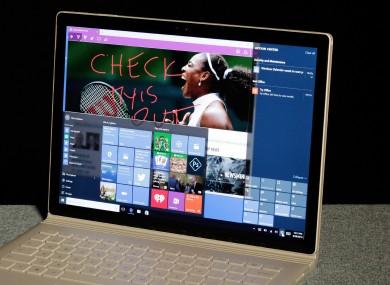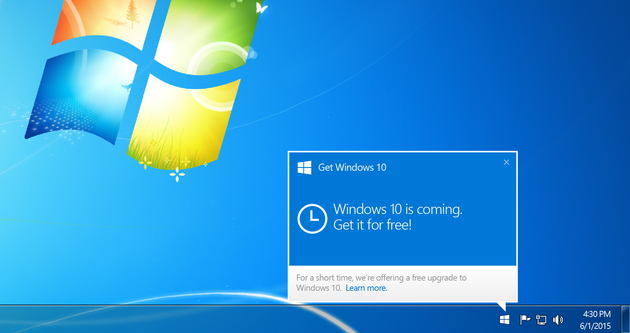Quick tips to make Windows 10 work
1. in order to achieve the maximization of the performance
If you are using a desktop computer or a laptop that is always connected, you can maximize processor performance by changing the Power Options. Click the Start button in the lower left corner on the desktop (or Windows key + X) and go to the menu options of power. On the screen in Figure A button for high throughput. Remember; change this setting blows battery charge quickly to use it wisely. Oh, and you can also on the composition of the schedule changes while you are here.
Click the "Edit" Link to add HTML to this space.
2: Pin Explorer file search
one of the most powerful features of the Windows File Explorer 10 is the ability to save searches. Figure B shows the saved search that identifies all Word documents in a specific folder. If you have many files in the .doc, this search is to have very useful around. However, it would be even easier if the search was nailed to the Start menu, where you can reach it even faster.
3: Change Bing
Microsoft wants you and your personal assistant Cortana that uses Bing as default search engine and Google, etc. You can force Cortana, to use another search engine, but first, you need to change the default browser.
If Firefox is the default browser in Windows 10, Cortana should have a Google search. If Chrome is the default browser, you will need to install a plug-in Chrometan and change the default setting; otherwise, Cortana is stubborn and will continue Bing.
4: The range limit Cortana
If you want to change the behavior of Cortana further search, you can limit your search parameters themselves. For example, you may have to tell Cortana on the Internet do not look at.
Click to look in the search box Cortana in the taskbar, and then navigate to the setup screen Cortana, as shown in Figure C on the ground should be an option that says online and contain search results. Change operation and Cortana show more results from search engines, is the default value.
Windows 10 a free upgrade expires soon, but we must build a leap?
approximately a year approved since Microsoft launched Windows 10 around the world, and the OS has been installed by more than 350 million since then. While it’s not going to achieve its original aim of one billion devices by mid-2018, it’s still a sizeable amount.
That’s mostly thanks to it being offered as a free upgrade for Windows 7 and 8.1 users for the first year, something to help make the switch easier for users.
That free epoch is nearly at an end as the 29 July deadline is almost here so if you’re still on the fence about upgrading, here’s what you want to know.

What do you get with Windows 10?
If anything, Windows 10 still feels more like the version Windows 8 should have been initially, focusing more on the desktop while having tablet elements like app displays in the backdrop.
As well as familiar Windows features, it introduces a few new things like a simplified interface for settings, apps baked into the start menu, multiple desktops (if you don’t want the one workspace to be filled with all open programs), and constant security updates as it’s the last version of Windows.
The drawbacks are you will have standard updates which can happen at any time – although the anniversary edition due on 2 August will fix that by letting you choose appropriate times – and you need a Microsoft account to use it properly for services like the Windows Store, Xbox Live and Microsoft Office.
What hardware is needed to run it?
Processor: 1GHz or faster
RAM: 1GB for 32-bit or 2GB for 64-bit (the latter is more suited for PCs)
Disk space: 16GB for 32-bit or 20GB for 64-bit.
Graphics: DirectX 9 or later with WDDM 1.0 driver
If the on top of means nothing to you, you can run a compatibility test by right-clicking the Windows icon at the bottom right-hand corner and finding the option there.
How do I upgrade?

If you’re eligible for the upgrade, you should already have received pop-up or full screen notifications saying you can upgrade. If you don’t, you’re either not suitable or you’ve notification turned off. The latter can be solved by clicking on the Windows icon at the bottom right-hand corner.
otherwise, you can go into Control Panel > Windows Updates and you can update it there.
Should I install it?
However, if you’re planning on upgrading to Windows 10 in the future at any position, then you should.
The initial bugs have been ironed out and while it’s not perfect, it does have the centenary edition coming up which will add a few tweaks to the method. However, some older PCs have issues regarding drivers and it recognizing hardware like headphones and USB so you may have to reinstall them if that happens.
If that’s the case, you should go into Start > Settings > Update and mending and click Check for Updates. It will start installing anything it didn’t recognise first.
Both Windows 7 and 8.1 will still be supported by security updates for a while (more details below), but if you plan to use it after the cutoff point, then for security reasons alone, you should benefit of it. Windows 10 is the last version of Microsoft’s operating system so you won’t have to pay for upgrades after it.
Anything to keep in mind when installing?
While the chances of something going wrong are low, make sure you back up any important files before downloading them.
It’s better to take that precaution first before doing anything in case as something might go wrong in the setup, or you might want to revert and recover your files, especially for programs/apps designed specifically for Windows 10.
When you’re in the installation process, go for custom instead of express. The reason for that is under custom, you can decide just how much data Microsoft has access to when you’re using Windows.
Some can be used for diagnostic purposes and to help improve features, but if you feel unsure about something, it’s better to turn it off. If you missed it, you can change them within settings.
When you have it installed, you should check your most popular programs and see if there are Windows 10 versions available.
What if I don’t like it? Can I get Windows 7/8.1 back?
Yes, you can. You have the option to return to your original version provided you do so with 30 days. The files needed to revert back are saved on your computer so provided you didn’t delete them (they’re under the C:\Windows.old folder), you can do this by going into Settings > Update and Security > Recovery > Go back to Windows 7/8.1.
If you think you might revert back, you should back up your files first before you upgrade to Windows 10. This should be done anyway in case any hiccups occur during the installation process.
What happens if I don’t upgrade before the deadline?
Well, nothing significant will happen but if you choose to upgrade later on, you will have to pay €139 for the privilege. This won’t matter if you have to buy a new laptop or PC as it will be automatically included with it, but naturally that’s a more expensive option and your current PC/laptop will likely be able to handle the upgrade.
An eventual problem is when security updates will be phased out. This won’t happen for a while – security updates and fixes for Windows 7 will continue until January 2020 while Windows 8 will be supported until 2023 – but it’s something to keep in mind if you’re keeping your PC for the long haul.

